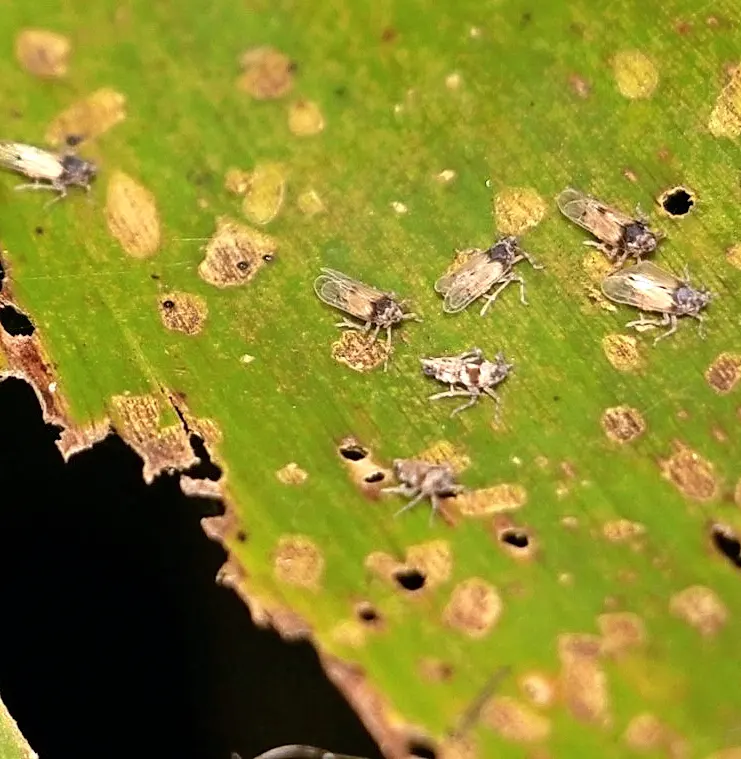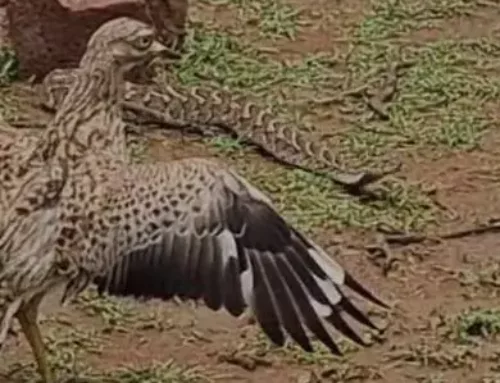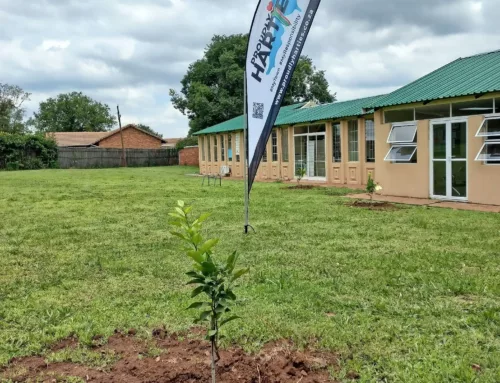The bugs are not failing – it is a 50-year old problem playing out
The Centre for Biological Control (CBC) of Rhodes University responded to the public’s skepticism and statements that the bugs on the hyacinth are not working.

The hyacinth bugs at work.
“We have been hearing this for years. The bugs actually do work, but you are seeing a different problem. Hartbeespoort Dam has a 50-year accumulation of dormant seeds in the sediment – millions upon millions of them. These seeds can remain viable for 15-20 years,” said Professor Julie Coetzee of the CBC.
“Every spring, environmental conditions become perfect for germination. Dropping water levels expose sediment to sunlight, warm water temperatures trigger seed activation, rainfall washes in nutrients from upstream (nitrogen, phosphorus), and seeds germinate en masse. This is a biological inevitability. But the bugs are working. They are preventing the plants from flowering and adding more seeds to that bank. Without biocontrol, we’d be at 80-100% cover year-round with the seed bank growing exponentially.”
Coetzee said that until the 50-year seed bank is exhausted, germination will happen every spring. “There is no way to remove the seeds, they are buried in sediment across the dam. Our only option is to prevent new seeds through biocontrol that stops flowering, and physically remove plants before they mature, starving the seed bank over time. This is a marathon, not a sprint. Each year we prevent flowering, that’s one year closer to depleting the seed bank. Each spring germination uses up more of those dormant seeds without replacement.”
CBC has already released over 100 000 bugs since August and continues with 20 000 bugs per week. Community rearing stations have been set up to supply bugs year-round. “Physical removal is synchronised with biocontrol timing,” she said.
There have been outcries from some community members to spray the hyacinth with herbicides. “Chemical spraying creates algal blooms and toxins in drinking water. It also caused hyacinth to flower massively before dying, creating millions more seeds. It is a temporary visual fix with worse long-term problems. It was tried pre-2017 and it failed catastrophically,” she said.
Regarding the harvesting of the hyacinth, Coetzee said that harvesting alone will never control the plants. Growth rates during peak season outpace any realistic removal capacity.
“The public is right to be angry. Decades of mismanagement, broken promises, and pollution have brought us here. But giving up kills the dam. We’re not asking for blind faith. We’re asking for 12 months to prove this integrated approach works at scale. Judge us by measurable results, not past disappointments,” she said. “Keep fighting for pollution control. Keep demanding accountability. But also recognise the people working 22-hour days on the water are trying to save what’s left. This dam can recover. But not overnight. And not without sustained effort from all of us.”
• We get explosive growth from NEW plants (not the ones we controlled last year)
• These perfect conditions mean seedlings can establish rapidly before biocontrol agents build up populations












